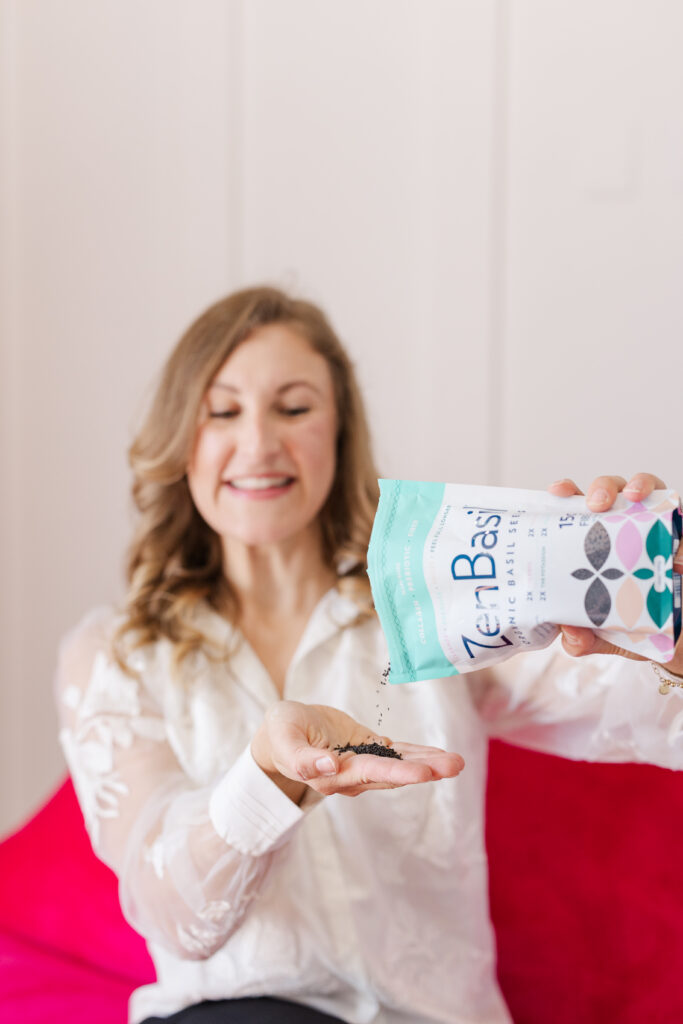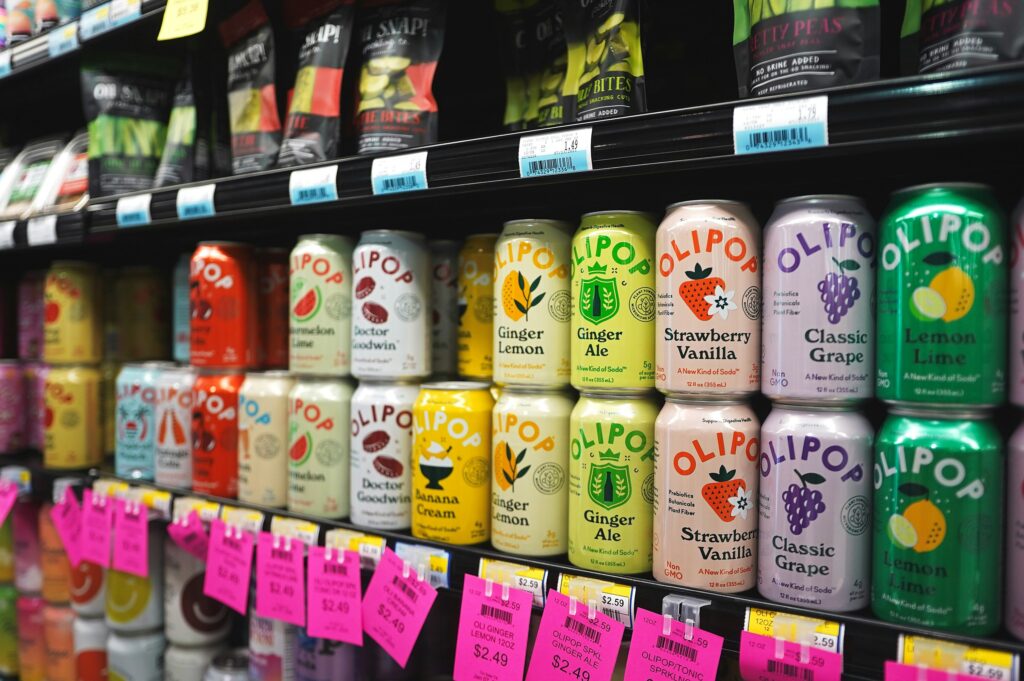How to Increase GLP1 Naturally, According to a Dietitian
Let’s be honest—losing weight isn’t easy. Whether you’re attempting to get back into your favorite jeans post-partum (it’s me!) or achieve your fitness goals, you know it takes more than simply wishful thinking. We’re talking about working out at the gym, learning to be patient (ugh), and making, oftentimes, difficult dietary choices when you’re at brunch with friends. But—no matter how much effort you put in, it can still feel like you’re playing a game of “where’s the missing piece?” when it comes to a successful weight loss formula. So, what gives?

Here’s the good news: we’re in a world where there are more tools than ever to help you lose weight at a sustainable and healthy rate. One weapon that’s been getting a lot of attention lately is GLP-1. Although you may be thinking of the newer medication class; GLP-1 agonist, I’m actually talking about your own GLP-1 receptors! Yep, naturally boosting your GLP-1 levels has been found to aid in fat loss, along with improve blood sugar, which is why I’m dedicating this post to explaining how you can increase GLP-1 naturally without a single injection!
What is GLP-1?
So, what is the GLP-1 I’m talking about? GLP-1, or glucagon-like peptide-1, is a hormone produced in the intestines following a meal. It is part of your body’s appetite-regulating mechanism, which causes you to feel full and content after eating. Not only that, but it promotes insulin release, allowing your body to better manage blood sugar levels—which is very important for people with type 2 diabetes, and people trying to prevent it.
While GLP-1 occurs naturally, different drugs have been developed to imitate its effects for individuals who struggle with weight loss or diabetes. There has been a surge in interest and usage of GLP-1 injections, but it’s good to realize there is more than one type! Here’s a brief overview of the five most frequent GLP-1 agonist medications:
- Semaglutide (Ozempic, Wegovy, Rybelsus) – Semaglutide is available in both injectable and oral forms, while Wegovy is specifically FDA approved for weight loss.
- Liraglutide (Saxenda, Victoza) – Saxenda is used for weight management, while Victoza is prescribed primarily for type 2 diabetes.
- Dulaglutide (Trulicity) – Is an injectable GLP-1 used to help manage blood sugar in type 2 diabetes.
- Exenatide (Byetta, Bydureon) – Byetta is a short-acting GLP-1, while Bydureon is a long-acting formulation for sustained blood sugar control.
- Tirzepatide (Mounjaro) – A newer option that acts on both GLP-1 and GIP receptors which enhances the effects on weight loss and blood sugar control. This is also touted to have less side effects.
However, medicine isn’t the only option to increase GLP-1 levels. There are numerous natural techniques, diet and lifestyle habits, to help your body increase GLP-1 secretion!
But, what does GLP-1 do?
- Reduces appetite by targeting the brain’s hunger centers.
- Delays stomach emptying, so you feel full for longer.
- stimulates the secretion of insulin, which helps your body manage blood sugar
- Improves insulin sensitivity, allowing your cells to use blood sugar more efficiently.
- Supports fat loss by lowering cravings and promoting a sense of fullness.
- Promotes long-term weight loss without excessive diets.
How Does GLP-1 Promote Weight Loss?
As a dietitian, I am frequently asked how GLP-1 assists with weight loss. Here is how GLP-1 does its magic.
- Reduce Hunger: GLP-1 suppresses your appetite by stimulating your brain’s hunger centers, letting your body recognize you’re full faster and for longer.
- Slower Digestion: GLP-1 slows the flow of food through your digestive tract, keeping you feeling fuller for longer and preventing sudden cravings.
- Improved Blood Sugar Control: GLP-1 increases insulin production and sensitivity, making sure your blood sugar is used for energy rather than stored as fat.
These combined effects create a strong weight loss strategy—reduced hunger, improved blood sugar regulation, and fewer cravings. Most people report that this reduces food noise overall and the stress of losing weight. This makes it easier to prioritize nourishing, whole foods that support your body’s well-being and help maintain a healthy waistline.
How to Naturally Increase GLP-1
Are you ready to raise your GLP-1 levels naturally? This is a great option for individuals who don’t want to be on lifelong expensive medication and deal with the significant side effects from medication. Yes, you can raise GLP-1 levels naturally! Let’s look at some easy (but effective) ways for increasing this hormone.

1. Embrace Prebiotics
Naturally, the American diet has very few prebiotics. Prebiotics serve as food for the beneficial bacteria in your stomach, and a healthy gut promotes GLP-1 synthesis. Prebiotics are present in foods such as bananas, artichokes, garlic, onions, and oats. Feeding your gut prebiotic-rich meals can stimulate GLP-1 secretion, improve digestion, and aid in weight loss. Check out this guide to learn more about which foods are beneficial to intestinal health.
2. Monitor Your Gut Health
A healthy gut flora balance is necessary to promote GLP-1 secretion. Test, don’t guess! Consider completing a stool test to ensure that your levels of good gut bacteria are plentiful and that specific strains, like Akkermansia, are elevated to support your metabolism. This is a popular tool among my patients! The more diversified your gut flora, the more successful your body will be at increasing GLP-1 levels. A fruit, vegetable, and fiber-rich diet will assist your gut health. Consume plenty of soluble fiber, practice meal hygiene, test don’t guess, and work with a dietitian to devise an individualized plan.
3. Manage your stress.
Chronic stress might disrupt your hormones, particularly GLP-1. When you’re stressed, your body prefers fast energy sources (read: desires for junk food). This can slow digestion, resulting in lesser GLP-1 synthesis. Incorporate mindfulness, yoga, or a calming walk into your daily routine to reduce stress and increase GLP-1 levels. Consider incorporating a few deep breaths before every meal and utilizing adaptogens to support your body’s response to stress.
4. Fill Up on Fiber

We’ve discussed soluble fiber, but let’s be clear: consuming a lot of fiber can help you increase your GLP-1 levels significantly. Fiber slows digestion, allowing your body to release GLP-1. This keeps you feeling fuller for longer. Select fiber-rich foods including non-starchy vegetables, legumes, and whole grains. Healthy fats, such as olive oil, can also help raise GLP-1 levels.
5. Strength Train
Strength training has been shown to improve insulin sensitivity and increase GLP-1 levels. Building muscle also aids in fat loss, making it a win-win situation for anyone seeking to lose weight. Resistance workouts such as squats, lunges, and weightlifting can boost your GLP-1 levels and metabolism. I recommend that my patients strength train at least 3x weekly. If you’re in Dallas, I recommend training at Lifthouse or using a Studiohop membership to visit a mix of studios like Evolve and PitFit.
The Bottom Line
Increasing GLP-1 naturally can aid in weight loss, especially when accompanied with healthy habits such as stress management, physical activity, and a balanced diet high in fruits, vegetables, and healthy fats. While GLP-1 drugs are an option for some, you can control your weight and metabolic health by making easy lifestyle modifications that naturally increase GLP-1 production.
Whether you’re trying to support your type 2 diabetes management or just looking for a natural edge in your fat loss journey, these strategies can help you increase GLP-1 production and feel fuller, longer—all while keeping your appetite and cravings in check.
Remember that improving your health takes time, but with patience and perseverance, you can achieve long-term changes. Are you ready to take the next step? Boost your GLP-1 levels, increase your metabolism, stay on track with your goals and if you’re overwhelmed, I’m here to help! Book a free discovery call with a dietitian nutritionist who understands how hard weight loss can feel!





